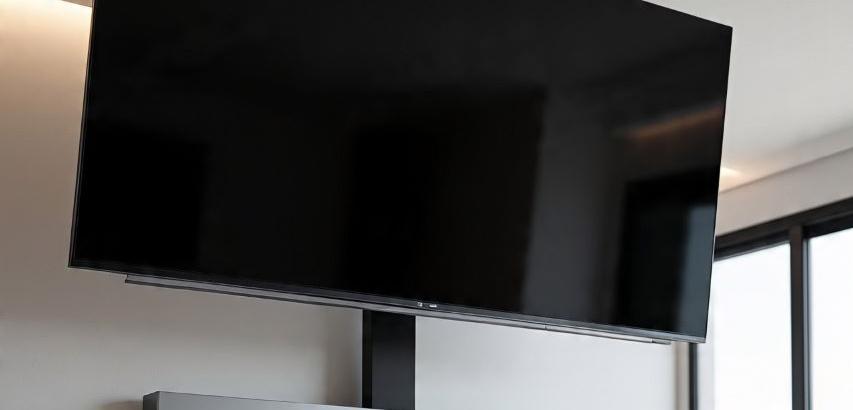An electric ceiling TV mount is a motorized mounting system designed to suspend a television from the ceiling and provide the ability to raise, lower, tilt, and sometimes swivel or rotate the TV at the touch of a button. It's a sophisticated solution for spaces where wall mounting isn't ideal or where dynamic positioning is desired.
Core Functionality & Features:
Motorized Vertical Lift: The primary feature. An electric motor silently raises the TV up towards the ceiling for storage or lowers it down to the optimal viewing height.
Motorized Tilt (Common): Allows tilting the TV screen up or down for better viewing angles, especially useful in rooms with tiered seating or varying heights.
Motorized Swivel/Rotation (Less Common/Higher-End): Some advanced models offer the ability to rotate the TV horizontally (swivel) or even turn it 90 degrees for portrait orientation (rotation), ideal for presentations or unique layouts.
Remote Control Operation: Includes a remote (often RF for reliability through obstacles) to control all motorized functions.
Preset Positions: Higher-end models allow saving favorite height/tilt positions for one-touch adjustment (e.g., "Movie Height," "Storage Position").
Safety Locking: Automatically locks the TV securely in position when movement stops.
Integrated Cable Management: Channels to neatly hide and manage power cords and AV cables within the mount's structure.
Key Benefits & Use Cases:
Space Optimization: Frees up valuable floor and wall space. Perfect for rooms with:
Large windows, fireplaces, or artwork on the main wall.
Unconventional layouts where the best viewing spot isn't against a wall.
Minimalist aesthetics.
Flexibility & Versatility:
Adjust the TV height for seated viewing, standing, or even while lying in bed.
Tilt the screen to reduce glare or improve sightlines from different seating levels.
Stow the TV flush against the ceiling when not in use, creating a cleaner look or protecting the screen.
Improved Viewing Experience: Achieves the ideal ergonomic viewing angle for different activities and users.
Safety & Cleanliness: Keeps the TV safely out of reach of children or pets when raised. Reduces dust accumulation.
Commercial Applications: Widely used in conference rooms, showrooms, hospitality (hotels, bars), healthcare facilities, and high-end homes.
Critical Considerations & Potential Drawbacks:
Structural Requirements: MOST IMPORTANT. Ceiling mounts exert significant downward and potential lateral forces. Installation MUST anchor into solid ceiling joists (wood or metal). Drywall anchors are NOT sufficient. Professional structural assessment and installation are highly recommended, often essential.
Ceiling Height: Requires sufficient ceiling height (typically 8.5 feet / 2.6m minimum, often more) to allow for both the lowered viewing position and the raised/stowed position without obstruction. Low ceilings are usually unsuitable.
Power & Wiring:
Requires a dedicated power outlet near the mount location (usually in the ceiling void).
Needs a plan for routing power and AV cables from the TV location to source components (cable box, AV receiver, game consoles). This often involves significant in-ceiling wiring work and potentially conduit.
Cost: Significantly more expensive than standard wall or tilt mounts. Prices range from several hundred to well over a thousand dollars, plus installation costs.
Installation Complexity: Installation is far more complex than a wall mount due to structural requirements, wiring, and motor calibration. Professional installation is strongly advised for safety and proper function.
Weight & Size Compatibility: Must be carefully matched to the specific TV's size, weight, and VESA pattern. Exceeding weight limits is dangerous.
Noise: While designed to be quiet, some motor noise may be audible during operation, especially in very quiet rooms.
Maintenance: Motorized systems have moving parts and electronics, potentially requiring maintenance or repair over time.
Vibration: Ensure the mount is robust enough to minimize screen vibration, especially if mounted near HVAC systems or in areas with foot traffic above.
Types & Variations:
Basic Lift & Tilt: Most common, offering vertical movement and tilt.
Lift, Tilt, Swivel: Adds horizontal rotation (swivel).
Lift, Tilt, Rotate: Adds 90-degree rotation capability.
Low-Profile vs. Drop-Down: Some offer minimal drop (suitable for rooms with very high ceilings), others have a longer drop range.
Commercial vs. Residential:
Commercial units often have higher weight capacities, longer drops, and more robust construction.
Electric ceiling TV mounts offer unparalleled flexibility and space-saving benefits, transforming how and where you can place a TV. They excel in challenging layouts and high-end installations. However, they are not simple
DIY projects. The critical factors are:
Structural Integrity: Must be anchored securely into ceiling joists.
Professional Installation: Highly recommended for safety, wiring, and functionality.
Adequate Ceiling Height & Planning: Requires sufficient space and careful planning for wiring and cable management.
Significant Investment: Higher cost for the mount and installation.
If you have the appropriate ceiling structure, height, budget, and are willing to invest in professional installation, an electric ceiling mount can be a stunning and highly functional solution. Always prioritize safety and consult with qualified installers and structural experts before purchasing or proceeding.
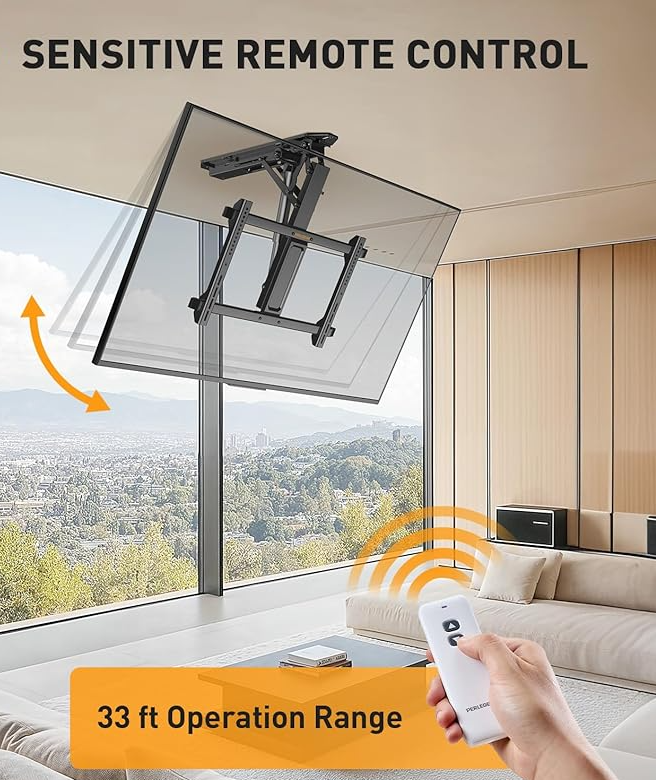 | 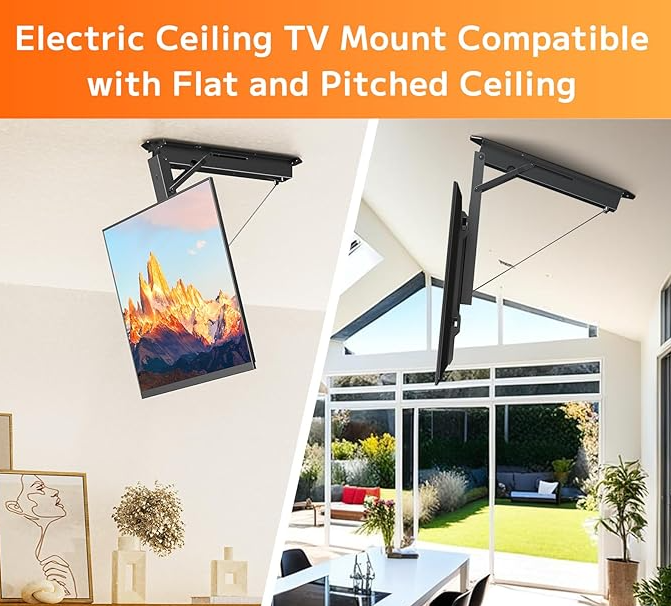 | 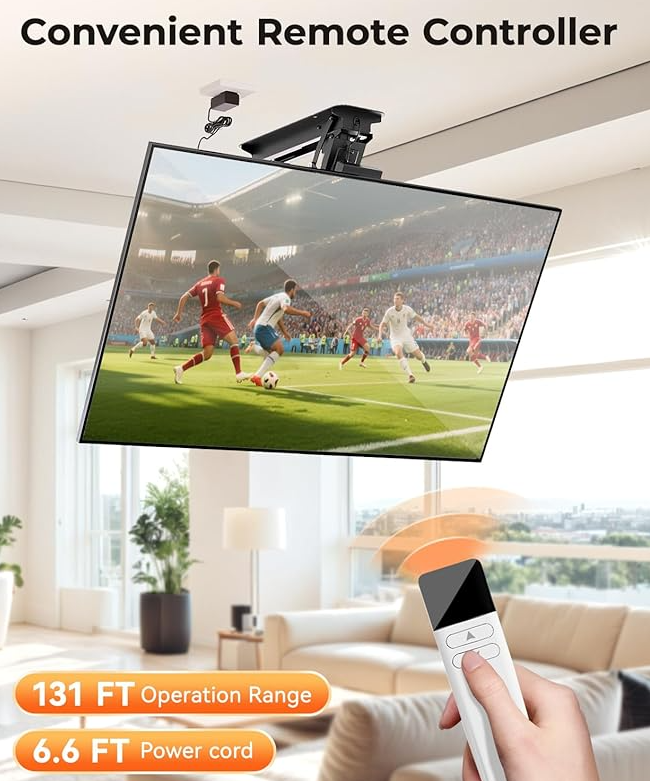 |
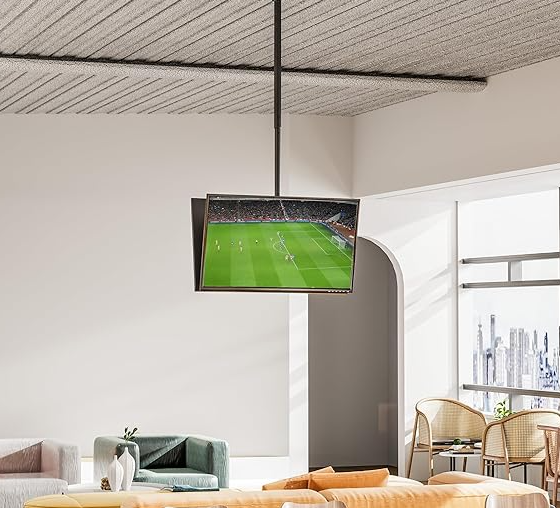 | 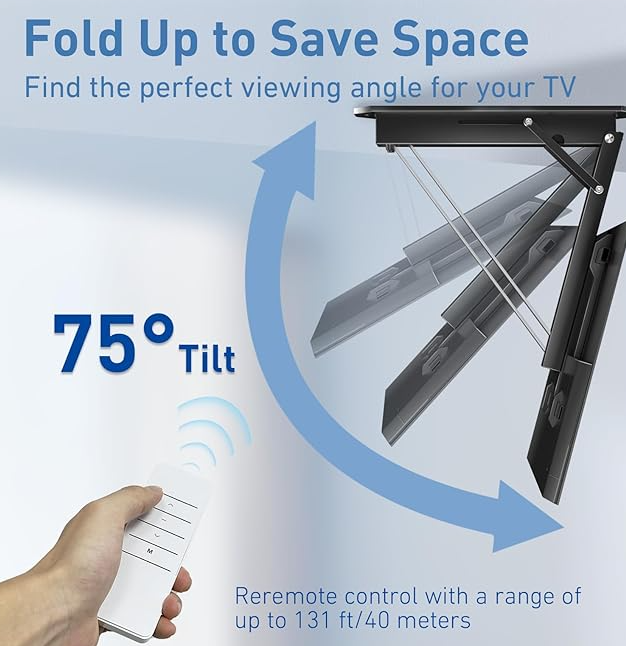 | 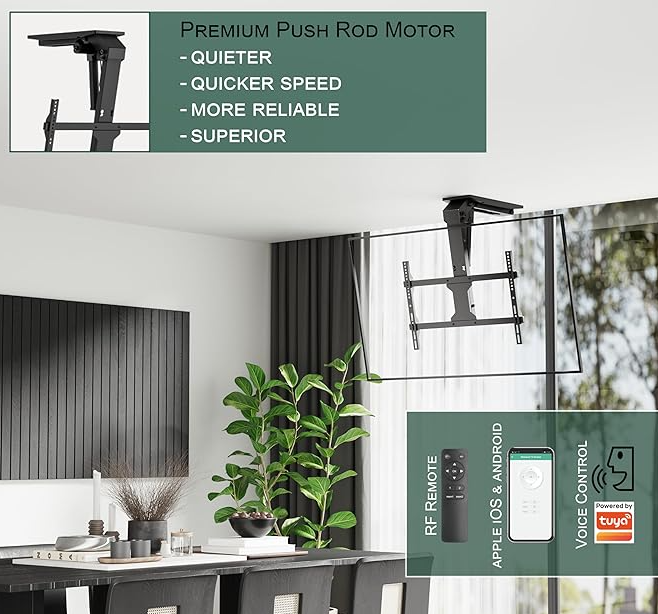 |
